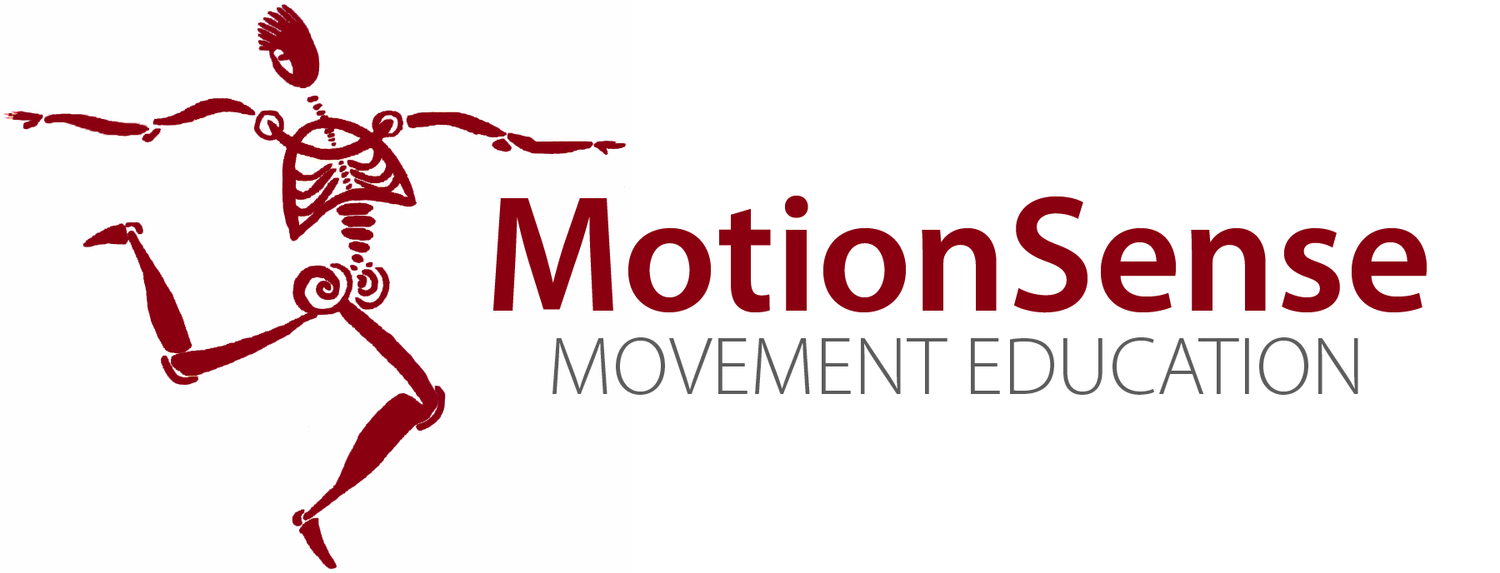This post originally appeared in the Taj Yoga Newsletter - June 2020
My dog Olive is an exuberant nine-year old, often mistaken for a puppy. She’s a high-energy girl, who could easily walk for hours. With the extra time available these days, we are getting our Zen ‘sniff on’ during multiple outings and meeting neighbors on foot that previously waved from a passing car. I love it!
Sometimes we’ll walk alongside a neighbor (6 feet apart of course) who is also out for a dog walk or a mind cleansing ‘Don’t tell anyone where I am right now-walk.’ Invariably, when they ask what I do for a living, we engage in the time honored dance of me spelling F-E-L-D-E-N-K-R-A-I-S Movement Teacher. (No T on the end, so they don’t think I belong to a religious cult). Quickly the conversation moves to a lively discussion of an old ankle injury or a previous knee surgery. I often get to hear a great story about wild, athletic endeavors and the moment it all came tumbling down.
I have even done a few impromptu street consults. I’ll ask my neighbor to walk ahead of me so that I can practice my movement detective skills and offer some simple tips for making this new daily ritual of striding through the neighborhood a little more comfortable for them.
To be clear, I’m not dispensing the truth from above about how to walk. Most of us do a good enough job of it. And truthfully, if you ask three bio-mechanists for an opinion about gait, you’ll easily get three very detailed, passionate and different points of view. Meaning they agree to disagree, especially about the fine details.
It’s impossible to boil the complexities of locomotion down to a one size fits all t-shirt, but I am inspired to consider putting ALIGNMENT MATTERS across the front of my chest.
In my private practice and out on the street, I see a lot of ‘noise in the system’ coming from an innocent lack of awareness about the relationship between joint alignment and the positive transmission of ground forces through the skeleton: Negative transmission, being the zigzag, cross-joint wear and tear that creates repetitive stress injuries.
Next time you head out for a city walk, listen to the sound of your footfall. You’ll literally hear what I mean. Does one foot land harder than the other? Would the imprint in soft sand be quite different side to side? Do your hips glide over your legs or are they fused, functioning as a unit? What happens above your waist? Where are your eyes focused?
If you have the gait of a grizzly bear and desire to move more like Bambi, I have some hot tips for putting a slide in your glide and moving through your neighborhood with the greatest of ease.
Soften your knees. Question your definition of what constitutes a straight and stable leg. You may have learned through dance, gymnastics or martial arts studies that locking your knee provides stability. In my view, a locked knee also locks your ankle and hip joints, often with a counterbalancing forward tilt of your pelvis. At 5’3” I can easily push over someone with locked knees who is twice my size. Soft knees allow us to connect to the ground and, therefore, be grounded. No extraneous forces traveling through the joints and soft tissues, just good old shock absorbing.
Experiment with pushing off your back foot. It may seem counterintuitive, but it activates a kinetic chain of extension and length from foot to skull. For those with balance issues, it can also minimize the time that you are fully standing on one leg. The transfer of weight (pelvis over foot) happens with two feet on the ground. Your heel lifts, the ball of your back foot is pressing into the ground; there’s just a moment of swinging your leg through to take the next step.
Don’t over-tip the bowl. The bowl being your pelvis. If you fill the bowl of your pelvis with water and have a desire to go from point A to point B without spilling it all, how would you move? Consider the image of a person carrying 40 pounds of firewood on her head. There is a quality of exquisite undulation as the pelvis glides over the legs. An economy of gentle sloshing versus the spill of a pelvis that is tucked, tilted or held in place.
Employing any one of these tips can bring new insight and possible relief to old aches and pains. Integrate these three together and you may discover that you see the world around you differently. Your head will be free to balance more easily on top of your spine. Your eyes can more effortlessly orient towards the horizon. Your mood may shift to match your expression of length and connection to the ground.
Above all, be patient with yourself. When learning something new, make small changes over time. Walking is one of the most unconscious yet well-rehearsed movement patterns in our lives. It takes more than a minute to refine such an old and reliable means of travel. Let your curiosity move you forward.

